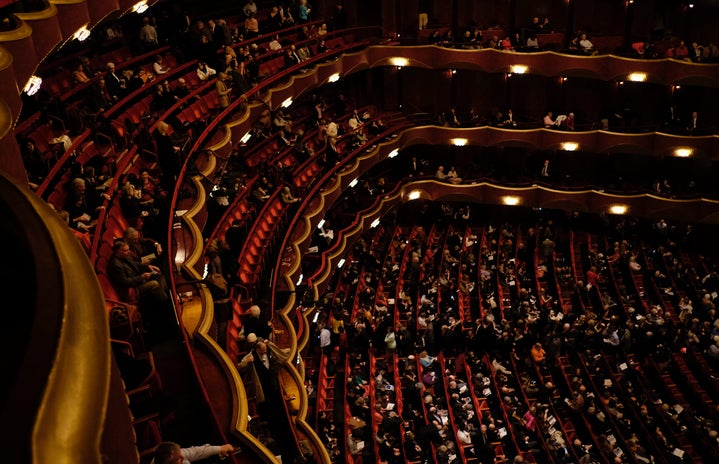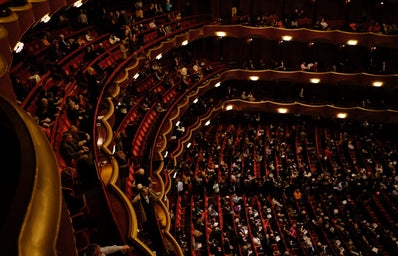When the trailer for the movie of the underrated Broadway musical came out, I recognized it immediately. It pulled me in with the melody of Boho Days, the famous main rock-themed, autobiographical monologue in Jonathan Larson’s only major work on the Broadway scene before his untimely and tragic death. Andrew Garfield was revealed to star as the famous musical theater writer, proving his eccentric acting abilities to be perfect for the role of the genius. I immediately was excited to see what Lin and Garfield could do together in the strange premise of a musical about a musical, both being critically-acclaimed for their art just as Larson was for Rent posthumously.
While the trailer was promising, my expectations were weary if I was being honest. While Lin’s work as a director for Hamilton and other creative endeavors has been fantastic, I was scared of how it would mix with Larson’s poignant and timeless style, which is significantly different from Lin’s modern hip-hop style even if themes such as unheard groups in New York City overlap throughout both of their work. I was nervous that the story would feel more like a Lin show like his other work instead of simply giving Larson stylistic priority. While he was in the movie of course because he can’t help but to cast himself as anything, he only had a cameo part and let other stars shine. This is what the style of the movie felt like as well, letting the charm of the 90s classic mixed with the familiar theme of the tortured genius the spotlight of this musical. And with this, created the next masterpiece in the musical theater world.
The whole time I was watching this, I was fully entranced with this story. Not many movies keep me off my phone the entire time, much less keep me sitting literally on the edge of my seat. The only other pieces of art able to do this include my favorites that also portray the themes of tortured artists including Burnham’s Inside and Whiplash. While Larson is portrayed as a genius with so much talent, there is also something so familiar and relatable to the way Garfield gives life to the famous figure. Larson is just a man sitting in front of a computer trying to figure out the next word, like so many students and writers alike. He is truly a complex character as a caring friend with empathy and excitement for the people he is closest to, like his best friend Michael and girlfriend Susan, yet has priorities of his own that get mixed up due to his ambition and drive for his own success and his beloved musical workshops. The story is truly one of a tortured artist: someone in love with the world but also in love with telling the story and figuring out how to do so without losing his love for the world.
Of course, the most important aspects of the story reflect the same as Rent: the AIDs crisis and friends holding each other close in these unpredictable times. This was the story Larson lived with his closest friends and it reflects in the feeling this musical gives you. It is deeply personal, yet also feels foreign with the interesting perspective of Larson’s mind. He turns this pain and tragedy into music, turning his life into art. While not everyone can flick a pen or play the piano like Larson, yet again I feel like this is universal to all audiences. Every person is trying to keep the light in their lives not by turning their head to hide from problems, but by creating something out of what feels like less than nothing. The line from Larson’s Rent depicts this well: “the opposite of war is not peace. It’s creation.”
On top of the story is the impeccable music that fits perfectly into the piece. While the soundtrack is powerful and fun to listen to, I believe it is specific to the film; one cannot be separated from the other without losing some of its power. Some of the most impactful music includes Louder Than Words and 30/90. Louder Than Words is one of the most powerful finales because it sums up all of the questions Larson still is unable to answer, proving his character development throughout the story where he learns that he can’t solve everything with a single music note, but with living life and being close to those around you, figuring out the world’s problems together. This also ties in the political undertones of solving the AIDs crisis through bipartisanship instead of the crusading of the moral majority. 30/90 explores the idea of aging in the industry: the feeling of becoming mediocre with time and being passed upon until your prime has escaped you. Larson’s large conflict in the show is escaping his dread of never being the next Sondheim, his idol who receives nods and praise throughout the film, just releasing before his death, making the film even more meaningful after the loss. 30/90 encapsulates the all too real fear of feeling sub par with age and being stuck in a life where your passion is not sought after, summarizing the film and Larson’s emotional undertones. The true emotional weight of this song does not fully hit until the end of the movie when it’s revealed Larson never even got to experience his Broadway opening of Rent because of an aortic aneurysm that occurred the night before his premiere. He didn’t run out of time before his success, but he never got to see it, making this song’s message too real.
However, the music isn’t all deep. It also shows Larson’s sense of humor and eccentricities with songs like Sunday, Therapy, and No More. Sunday is a nod to Sondheim’s Sunday in the Park with George, yet again proving his influence on the work of Larson. However, it also makes fun of his own mundane experiences in the food industry working at a diner with pretentious customers, mixing musical theater and Larson’s musical point of view into something that would usually uninspire others. Just like this part of the movie with multiple Broadway actor cameos including the Schuyler Sisters in the original Broadway cast of Hamilton and Andre De Shields, lots of this film feels like an inside joke for musical theater fanatics, which adds something for those who love the art of theater instead of the regular Netflix consumer. Therapy is an over the top, yet realistic view into the fight of a couple, depicting the complex back and forth that comes with sharing your emotions with another person while still wanting them to love and accept your fallibilities. Again, it shows his humor, yet also complexity with lyrics and different styles of music throughout the musical. No More is a more simple song of two best friends being excited about one of them moving up in life financially and being able to escape living paycheck to paycheck and live life to the fullest. This song allows the audience to see a fun side of the characters and their friendship, making the characters more likable and also show the variety of Larson’s work. Some of the music is also modernized such as Green Green Dress, proving that Lin’s directorial style is still prevalent, making the show more accessible for the big screen rather than the strange and niche form of rock monologue.
I cannot say enough about the importance and artistry behind this movie musical. It explores many of the themes we all deal with: love and friendship in the face of ambition and other priorities, the fear of mediocrity, and the feeling that time is ticking by with no goal in sight. The lyrics are written with such purpose to bring the audience into Larson’s short life and understand his point of view while also analyzing his surroundings, showing what created the genius and his work. Boho Days proves that while this fear will forever be in the back of our heads and we will never not look ahead for the next roadblock or in search of something better, we have to look around and see what brought us to this moment: the people we love and the experiences that shaped us, creating the life we love to live in. Tick, Tick…Boom! is a show specific to Larson’s life, but I think it’s universal of everyone’s experience with success, love, and art, however fleeting it might be; it is something we all continue to strive for.


